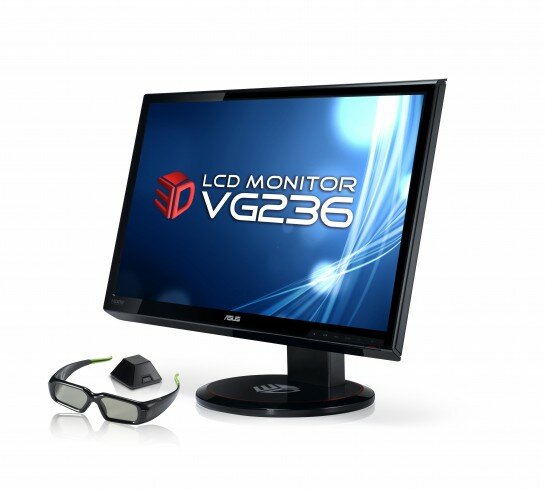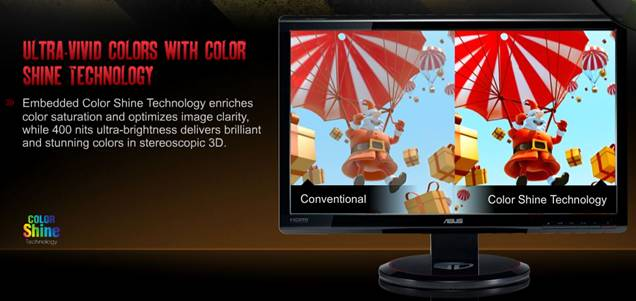This week saw the launch of the ASUS VG236H 3D display, which was first introduced to the world at CeBIT way back in March.
The 23-inch display leverages on NVIDIA’s 3D Vision technology to bring Full HD 1080p 3D gaming to the masses, with alternate frame sequencing ensuring that 3D visuals run smoothly. Content is not an issue either, with over 400 PC game titles compatible with NVIDIA 3D Vision technology.
 It’s easy to overlook that from an engineering standpoint, the VG236H is a technological showcase.
It’s easy to overlook that from an engineering standpoint, the VG236H is a technological showcase.
ASUS R&D teams are constantly pushing the envelope in a bid to enhance the overall experience for the consumer.
Let’s have a look at what goes into this 3D monitor:
Trace Free II technology is a combination of a 120Hz refresh rate and 2ms grey-to-grey response time to eliminate ghosting and trailers during movies and games. The 120Hz refresh rate doubles the number of frames per second, ensuring smooth playback; while the 2ms response time is achieved by through controlled voltage levels in the liquid crystal display.
ASUS’ Color Shine technology delivers 400 nits of ultra-brightness, translating to an improved projection of colours, even in 3D.
Its multiple film coats placed on the display ensure an exceptionally smooth surface that reduces the diffusion of light, resulting in clearer images and richer colour density and saturation.
ASUS Splendid Video Intelligence Technology comes with five pre-set modes (gaming, theater, night view, scenery and standard) that optimize colour fidelity. The incoming signal is processed through an analog-digital converter, which helps with image sharpness, as well as colour and contrast corrections, to enhance visuals. In gaming mode, it automatically lightens up dark areas while leaving well-lit ones untouched, and it does this without washing out the colours on screen.
3D technology is still in its infancy, so who knows what the future holds.
Related Articles
-
http://twitter.com/cloudsmesh Vishal
-
Anonymous
-
http://twitter.com/cloudsmesh Vishal
-
Anonymous
-
http://twitter.com/cloudsmesh Vishal
-
Anonymous
-
http://twitter.com/cloudsmesh Vishal
-
http://twitter.com/cloudsmesh Vishal
-
Anonymous
-
http://twitter.com/cloudsmesh Vishal
-
http://twitter.com/cloudsmesh Vishal
-
Anonymous
-
http://twitter.com/cloudsmesh Vishal
-
Anonymous
-
http://twitter.com/cloudsmesh Vishal
-
http://twitter.com/cloudsmesh Vishal
-
Anonymous

